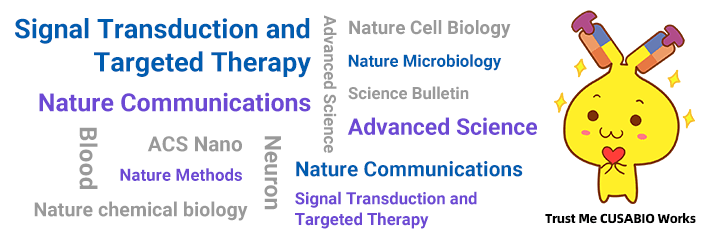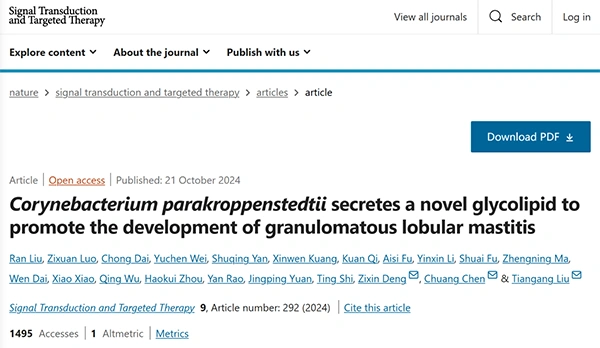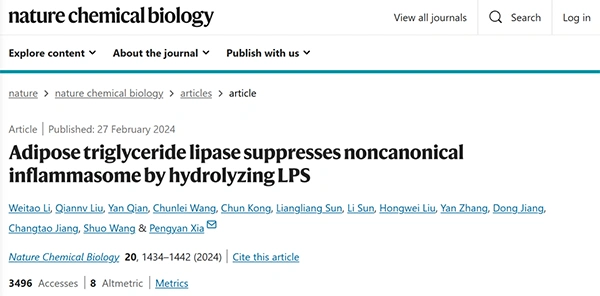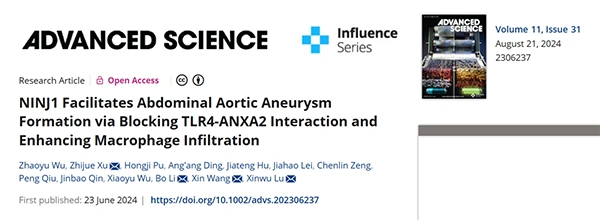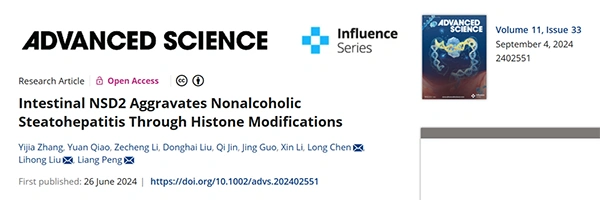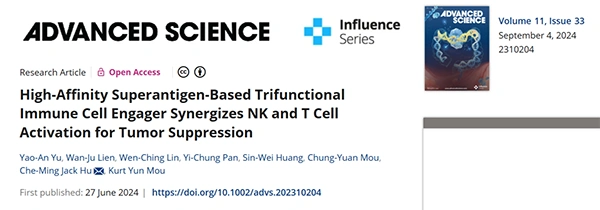Thank you for your continued support of CUSABIO! In November of 2024, articles related to CUSABIO products were published in excess of 230, with a cumulative impact factor exceeding 1200. The total number of articles has reached 24,100. Thank you for choosing CUSABIO research products during your scientific research journey. Thank you again for your trust and support. We will continue to work hard to provide you with better products and services. Now let's share our wonderful research results.
CUSABIO Monthly Citations Review
01 Corynebacterium parakroppenstedtii secretes a novel glycolipid to promote the development of granulomatous lobular mastitis
Impact Factor: 40.8
Journal Name: Signal Transduction and Targeted Therapy
CUSABIO Citation Product:
Rat ferritin, FE ELISA Kit; CSB-E08826r
Research Highlights:
This article investigates the pathogenic role of Corynebacterium parakroppenstedtii in granulomatous lobular mastitis (GLM). The researchers confirmed the bacterium's pathogenicity using Koch's postulates and identified a novel glycolipid (named corynekropbactins) secreted by C. parakroppenstedtii, which may promote GLM development by chelating iron, killing mammary cells and other colonizing bacteria, and increasing inflammatory cytokine levels. Additionally, the study analyzed the prevalence of C. parakroppenstedtii infection in patients with GLM and proposed an effective targeted antibiotic treatment strategy. The research highlights the first confirmation of C. parakroppenstedtii as a pathogenic bacterium in GLM and reveals the significant role of its secreted corynekropbactins in the underlying pathological mechanisms.
02 A highly conserved SusCD transporter determines the import and species-specific antagonism of Bacteroides ubiquitin homologues
Impact Factor: 14.7
Journal Name: Nature Communications
CUSABIO Citation Product:
dnaK Antibody; CSB-PA633459HA01EGW
Research Highlights:
This article uncovers a highly conserved SusCD transporter (designated as ButCD) in Bacteroides fragilis that determines the import and species-specific antagonism of Bacteroides ubiquitin homologues (BUbb). Animal studies further demonstrate the specific and efficient elimination of enterotoxigenic B. fragilis (ETBF) in the murine gut by BfUbb, suggesting its potential as a treatment for ETBF-associated inflammatory bowel disease and colorectal cancer. The findings provide a comprehensive elucidation of the species-specific toxicity exhibited by BUbb and explore its potential applications.
03 A germline-to-soma signal triggers an age-related decline of mitochondrial stress response
Impact Factor: 14.7
Journal Name: Nature Communications
CUSABIO Citation Product:
Mouse anti-Mullerian hormone (AMH) ELISA kit; CSB-E13156m
Mouse Testosterone, T ELISA Kit; CSB-E05101m
Research Highlights:
The study identifies a germline-to-soma signal that triggers an age-related decline in mitochondrial stress response in C. elegans. The highlight is the identification of the SusCD transporter (ButCD) as a key regulator of the mitochondrial stress response and the role of piRNAs.
04 Gene Therapy for Inflammatory Cascade in Intrauterine Injury with Engineered Extracellular Vesicles Hybrid Snail Mucus‐enhanced Adhesive Hydrogels
Impact Factor: 14.3
Journal Name: Advanced Science
CUSABIO Citation Product:
Rat Fibronectin, FN ELISA Kit; CSB-E04553r
Research Highlights:
The study presents a novel gene therapy for intrauterine adhesions (IUA) using an engineered extracellular vesicle and snail mucus-based adhesive hydrogel to silence the STAT1 gene, inhibit M1 macrophage polarization, and reduce inflammation. The highlight is the innovative hydrogel material and gene silencing approach, which significantly enhance therapeutic efficacy.
05 Parkinson Disease‐Targeted Nanocapsules for Synergistic Treatment: Combining Dopamine Replacement and Neuroinflammation Mitigation
Impact Factor: 14.3
Journal Name: Advanced Science
CUSABIO Citation Product:
Mouse dopamine, DA ELISA Kit; CSB-E08661m
Research Highlights:
This article presents a targeted nanocapsule therapy for Parkinson's disease (PD) that combines dopamine replacement and neuroinflammation mitigation. Researchers have developed carrier-free nanocapsules (NCs) that co-deliver dopamine (DA) and catalase (CAT) to address both DA depletion and neuroinflammation in the PD brain. These nanocapsules are surface-modified with Angiopep-2 (Ang) to enhance blood-brain barrier (BBB) penetration and are targeted to the PD-affected BBB through cRGD-modified CAT. Additionally, the CAT in the nanocapsules effectively reduces neuroinflammation, slows disease progression, and protects dopamine from oxidation. The innovation of this study lies in the development of a synergistic therapeutic approach that addresses both PD symptoms and disease progression.
06 Adipose triglyceride lipase suppresses noncanonical inflammasome by hydrolyzing LPS
Impact Factor: 14.8
Journal Name: Nature chemical biology
CUSABIO Citation Product:
Mouse pro interleukin 1 beta (pro-IL1B) ELISA Kit; CSB-ET011614MO
Research Highlights:
This article uncovers adipose triglyceride lipase (ATGL) as a novel negative regulator that suppresses the activation of the noncanonical inflammasome by hydrolyzing lipopolysaccharide (LPS). The study found that ATGL can bind to LPS and catalyze the removal of acylated side chains containing ester bonds, thereby reducing intracellular LPS levels and limiting the activation of inflammatory caspases. Mice deficient in ATGL exhibit enhanced immune responses when encountering intracellular LPS, including increased secretion of IL-1β, decreased cell viability, and increased cytotoxicity. This research not only clarifies the important role of ATGL in regulating inflammatory responses but also provides new potential targets for treating diseases caused by endotoxins.
07 The urotensin II receptor triggers an early meningeal response and a delayed macrophage-dependent vasospasm after subarachnoid hemorrhage in male mice
Impact Factor: 14.7
Journal Name: Nature Communications
CUSABIO Citation Product:
Mouse Hemoglobin; CSB-NP004901m
Research Highlights:
This study investigates the role of the urotensin II receptor (UT) in meningeal responses and delayed macrophage-dependent vasospasm following subarachnoid hemorrhage (SAH) in male mice. The research found that UT expression is triggered by blood or hemoglobin in the leptomeningeal compartment post-SAH, contributing to the reactivity of perimeningeal glia limitans astrocytes, microvascular alterations, and neuroinflammation, independent of CNS-associated macrophages (CAMs). Later, CAM-dependent vascular inflammation and subsequent CVS develop, leading to cognitive dysfunction. In a humanized UT mouse model, post-SAH CVS and behavioral deficits, mediated by UT through Gq/PLC/Ca2+ signaling, were prevented by UT antagonists. These findings highlight the potential of targeting UT pathways to reduce early meningeal responses and delayed cerebral ischemia in SAH patients.
08 NINJ1 Facilitates Abdominal Aortic Aneurysm Formation via Blocking TLR4‐ANXA2 Interaction and Enhancing Macrophage Infiltration
Impact Factor: 14.3
Journal Name: Advanced science
CUSABIO Citation Product:
Human Ninjurin-1(NINJ1) ELISA kit; CSB-EL015808HU
Research Highlights:
This article investigates the role of Nerve Injury-Induced Protein 1 (NINJ1) in the formation of Abdominal Aortic Aneurysm (AAA). The study identifies increased expression of NINJ1 in AAA lesions, particularly within macrophages. By generating macrophage-specific NINJ1 knockout mice, researchers demonstrate that the absence of macrophage NINJ1 can suppress AAA development and macrophage infiltration. Additionally, the study reveals that NINJ1 activates the TLR4/NF-κB/CCR2 pathway by blocking the interaction between TLR4 and its inhibitory protein ANXA2, thereby enhancing macrophage infiltration and pro-inflammatory responses. These findings suggest that NINJ1 could be a potential therapeutic target for AAA.
09 Intestinal NSD2 Aggravates Nonalcoholic Steatohepatitis Through Histone Modifications
Impact Factor: 14.3
Journal Name: Advanced science
CUSABIO Citation Product:
Mouse Lipopolysaccharides(LPS) ELISA Kit; CSB-E13066m
Research Highlights:
The study investigates the role of intestinal nuclear receptor-binding SET domain protein 2 (NSD2) in nonalcoholic steatohepatitis (NASH). It was found that intestinal NSD2 expression increases in obese humans and mice on a high-fat cholesterol diet (HFCD), correlating with the progression of NASH. Intestine-specific NSD2 knockout mitigates HFCD-induced intestinal barrier dysfunction and NASH, while NSD2 overexpression exacerbates these conditions. Mechanistically, NSD2 directly controls the transcriptional activation of Ern1 by demethylating histone H3 at lysine 36 (H3K36me2), thereby activating the ERN1-JNK axis and intensifying intestinal barrier impairment, which subsequently promotes NASH progression. The study also identifies UNC6934, an NSD2 inhibitor, as a potential therapeutic agent against intestinal barrier dysfunction and NASH, suggesting that targeting intestinal NSD2 could be a novel therapeutic approach for NASH management.
10 High‐Affinity Superantigen‐Based Trifunctional Immune Cell Engager Synergizes NK and T Cell Activation for Tumor Suppression
Impact Factor: 14.3
Journal Name: Advanced science
CUSABIO Citation Product:
Recombinant Human HLA class II histocompatibility antigen, DR alpha chain (HLA-DRA); CSB-EP360793HU
Research Highlights:
This article presents a novel immune cell activator, the high-affinity superantigen-based trifunctional immune cell engager (STYMIE), which can simultaneously activate and recruit natural killer (NK) cells and T cells for tumor treatment. The researchers used yeast library-based directed evolution to identify superantigen variants with enhanced binding affinity to immune receptors, which were then incorporated into STYMIE. Comprising a nanobody, a newly designed cytokine neo-2/15, and an Fc domain, STYMIE targets tumors, stimulates immunity, and prolongs circulation, respectively. The study found that STYMIE could enhance the recruitment of NK and T cells and inhibit the growth of various tumor models. The highlights of the study include the design principles of STYMIE, the directed evolution of superantigen variants, and the enhanced tumor suppression effect through the synergistic activation of NK and T cells.
24000+ Published Papers!
CUSABIO team. CUSABIO Monthly Citations Review: November 2024, Over 230 Citations with an Impact Factor Exceeding 1200, Totaling 24,100 Articles!. https://www.cusabio.com/c-21199.html

